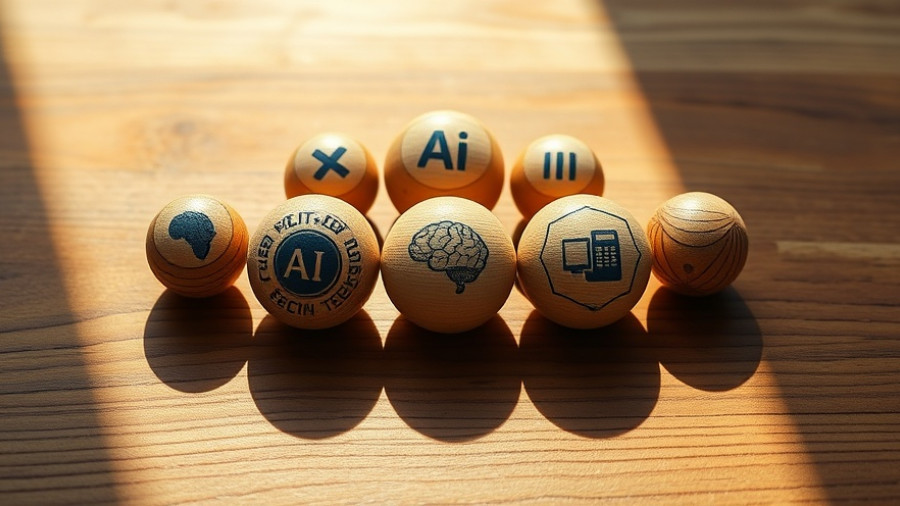
Understanding the AI Revolution in Organizations
Artificial intelligence (AI) is not merely a passing technological trend; it is fundamentally reshaping how organizations function and compete in the modern market. By integrating intelligent agents into various sectors, including customer service and legal work, businesses are not just streamlining processes but are redefining the very nature of their operational efficiencies. This evolution poses distinct challenges for leaders who must navigate this complex transition.
The Imperative for AI Strategy
Today’s business environment indicates that ignoring AI is simply not a viable option. Just as the internet revolutionized communication and commerce, AI is set to transform market dynamics and customer expectations. The question is no longer if AI should be adopted but rather when and how it can be woven into an organization’s fabric. According to emerging research, the technology poses a 'strategic blind spot' for many leaders, who often struggle to establish effective pathways for its integration.
Measurement of Adoption Speeds
Not all organizations will adopt AI at the same rate. Factors such as cultural norms, regulatory landscapes, and competitive pressures heavily influence the speed of AI integration. In some regions, like China, hospitals are rapidly implementing AI systems, whereas European counterparts often adopt a more cautious approach. This divergence in adoption speeds necessitates tailored strategies that reflect local realities and industry standards. As a result, organizations have to balance the push for innovation against their internal capacities for change.
The Three Forms of AI Adoption
AI adoption can generally be categorized into three distinct forms: shadow adoption, tool adoption, and transformative adoption. Understanding these categories allows organizations to strategize more effectively.
1. Shadow Adoption
This form of adoption occurs when employees experiment with AI tools independently, often without supervision or explicit approval. Research from the University of Melbourne indicates that a significant majority of employees—58%—utilize AI for tasks such as document summarization and report generation. While this can drive innovation and efficiency, it presents challenges in maintaining cultural alignment and trust within the organization.
2. Tool Adoption
Tool adoption refers to intentional efforts by companies to integrate AI technologies across various functions. This might involve implementing specific AI applications that elevate capabilities in departments like HR, finance, or marketing. By choosing to adopt tools systematically, organizations can align their use of AI with broader strategic objectives, thereby enhancing overall productivity.
3. Transformative Adoption
Transformative adoption requires organizations to rethink their foundational processes through the lens of AI. This involves not just integrating technology but also fundamentally altering the structures that govern operational practices. For example, reimagining customer interaction pathways or buying experiences leveraging AI can lead to radical changes in market engagement.
Implications of AI on Competitive Dynamics
As AI continues to evolve, it will create new competitive landscapes. Companies that embrace these changes must be ready to adapt to a rapidly transforming environment, maintaining vigilance over existing market players and emerging startups that leverage AI innovations. Now more than ever, it is crucial for organizations to assess not just how AI affects their operations, but how it redefines their competitive positions in the industry.
Conclusion: Navigating the Future with AI
The path toward successful AI integration is neither linear nor straightforward. Organizations must embrace the complexity of adopting AI strategies while remaining adaptable to ongoing changes. By understanding the nuances of AI adoption and striving to weave these transformative technologies into their strategic frameworks, businesses can not only survive but thrive in the age of AI.
If your organization is yet to explore developing a tailored AI strategy, now is the time to assess your readiness and potential pathways forward. The future is undeniably tied to our technological capabilities, and nurturing an innovative mindset is imperative for staying ahead in competition.
 Add Row
Add Row  Add
Add 




Write A Comment